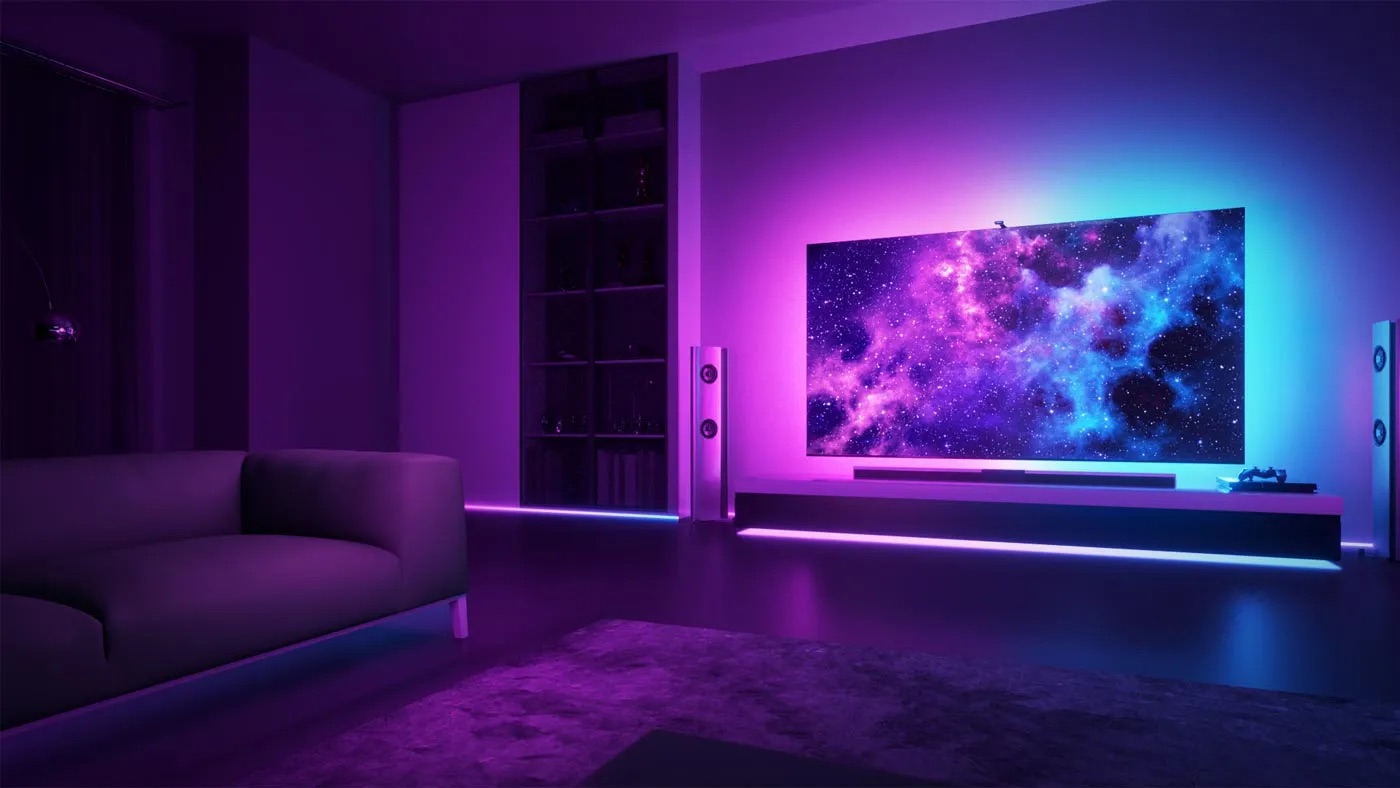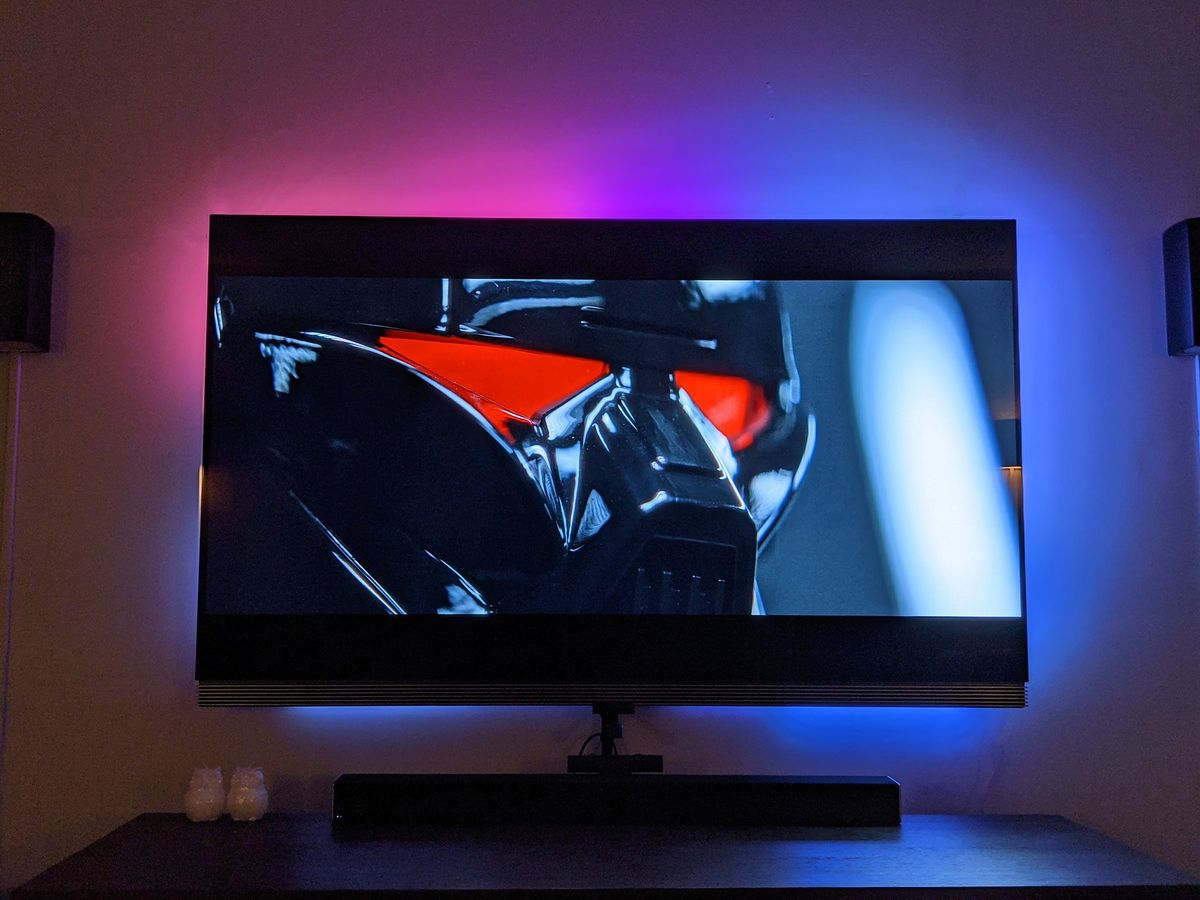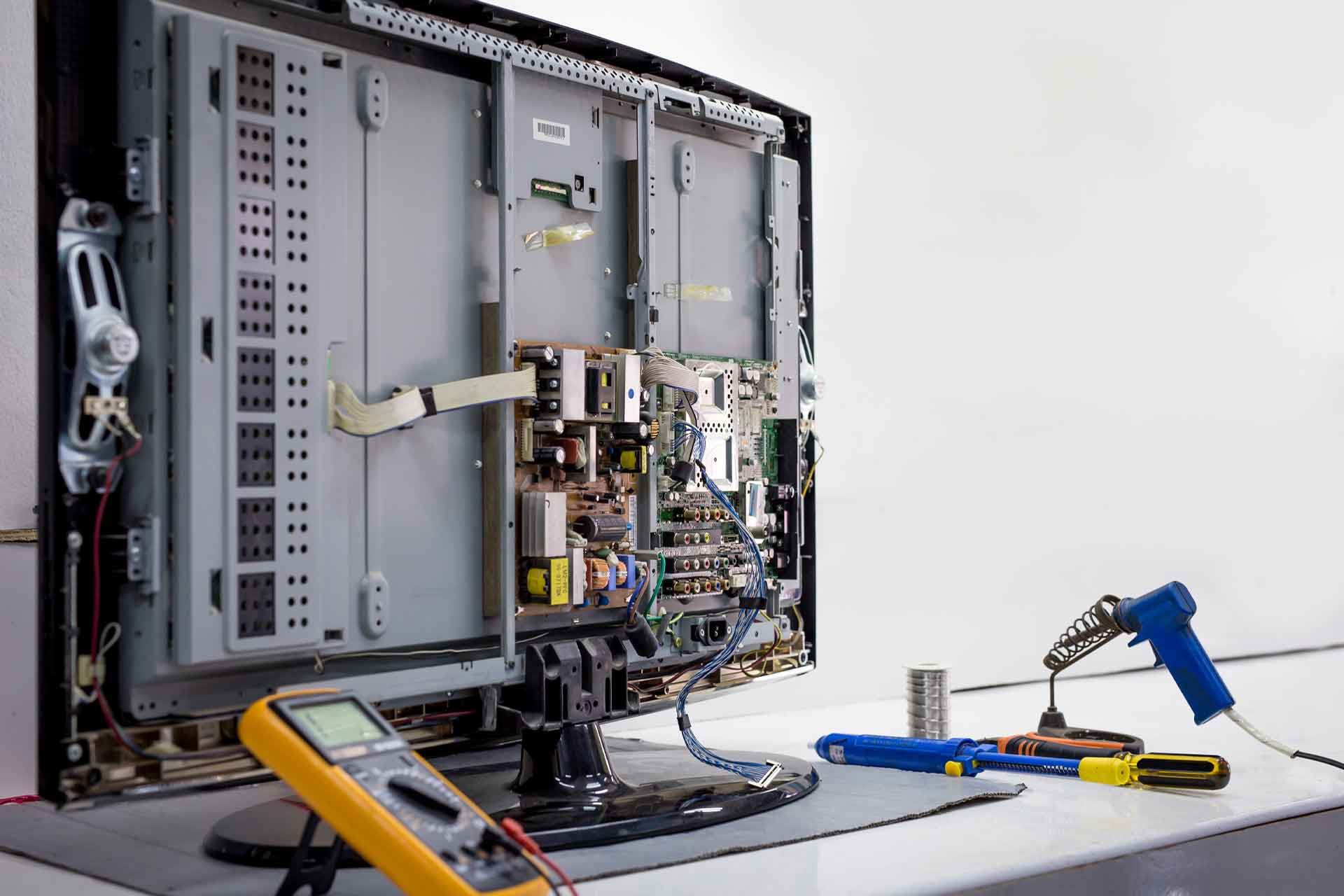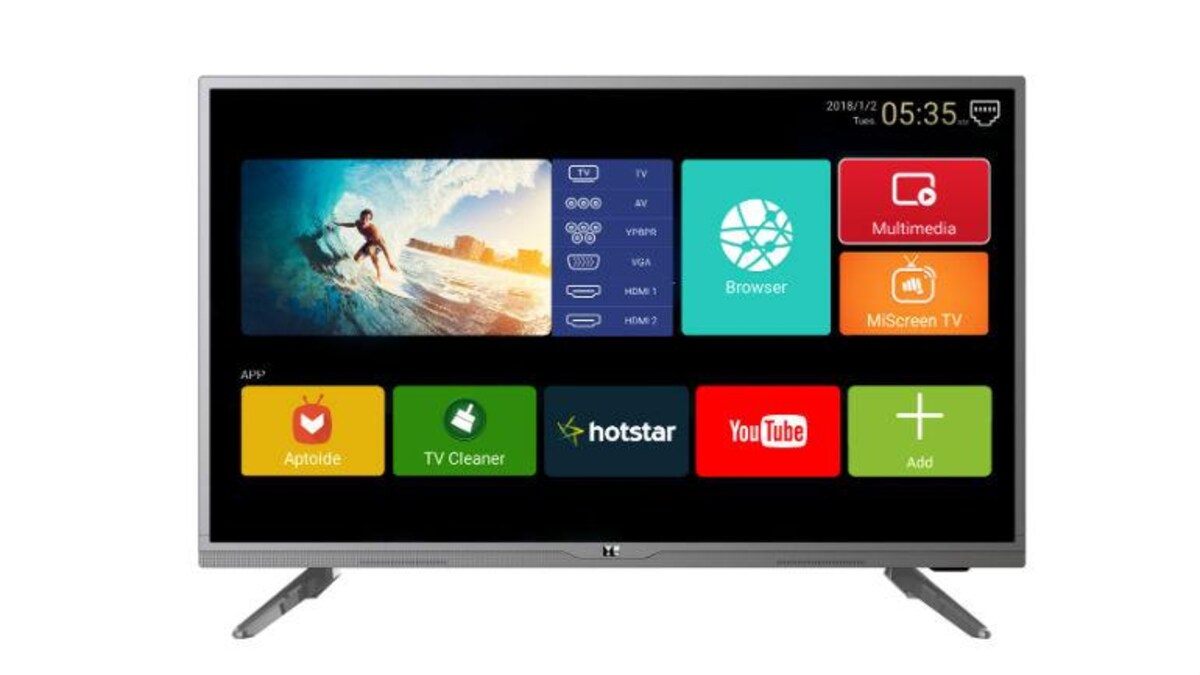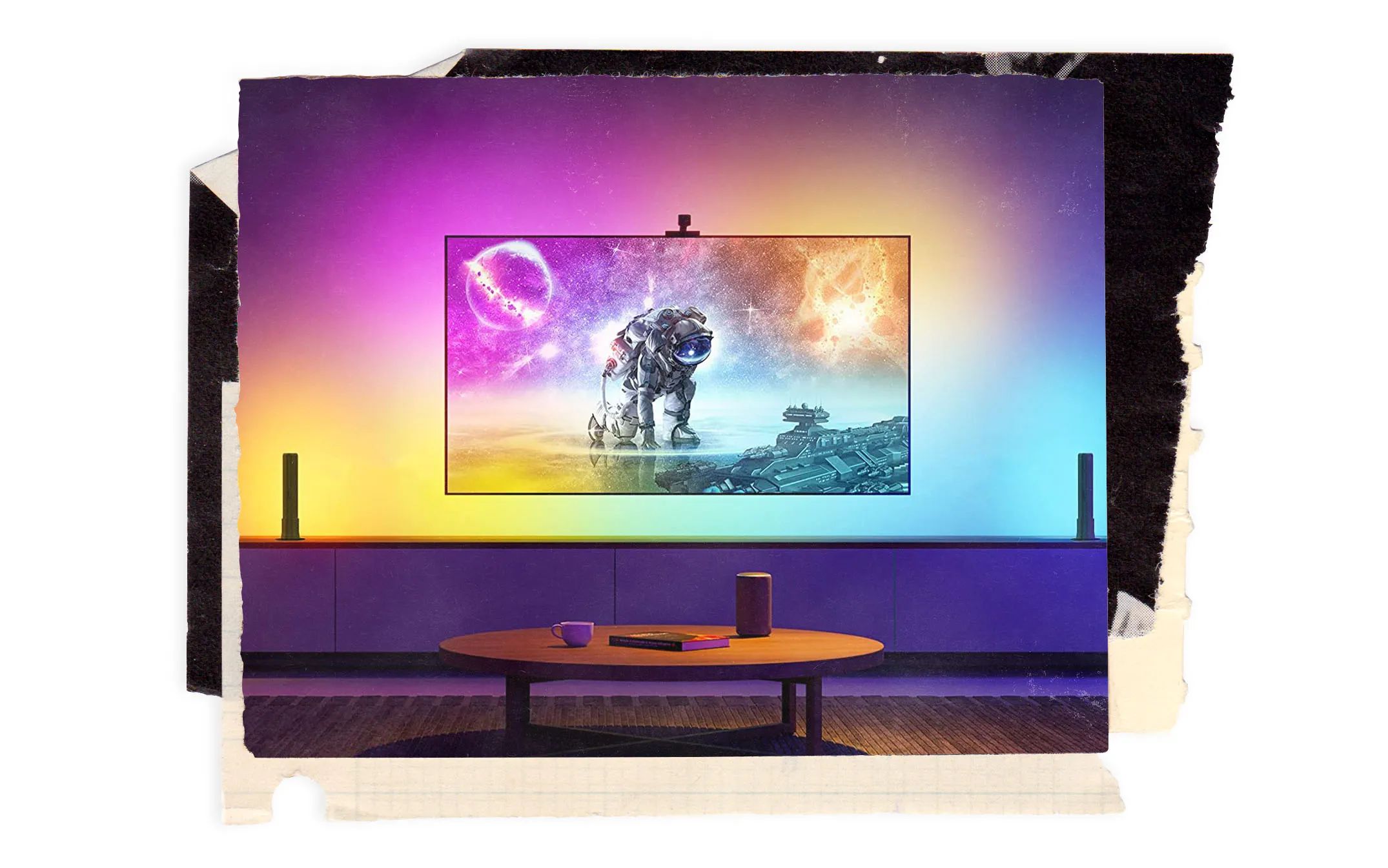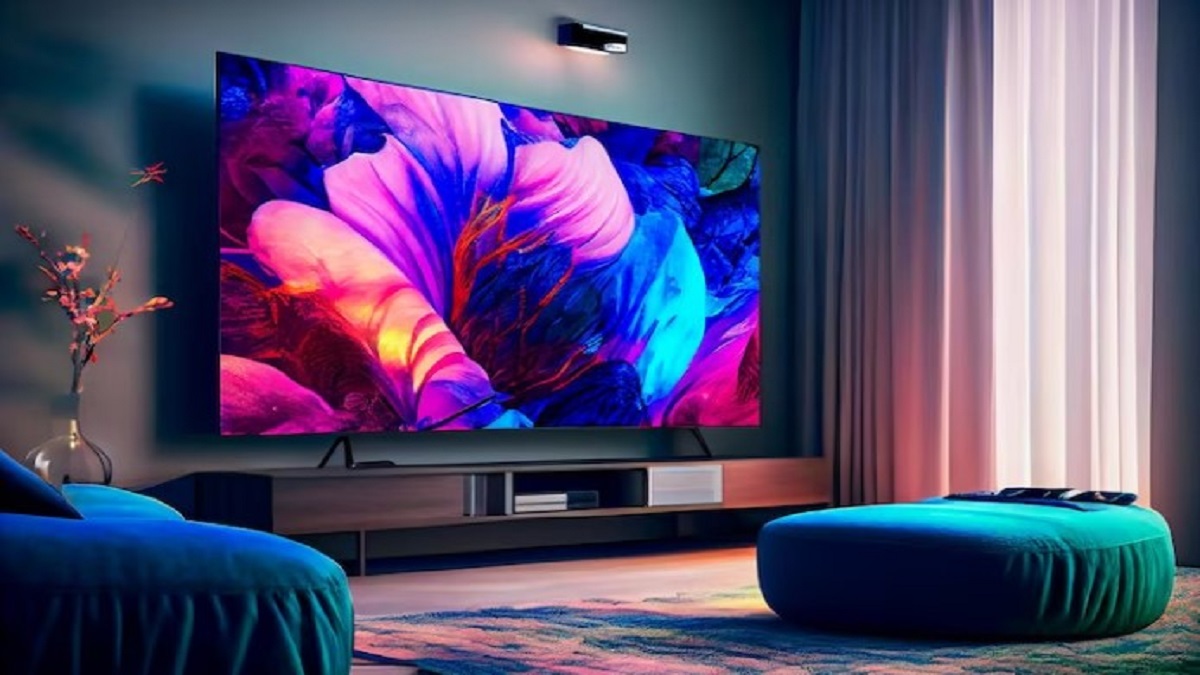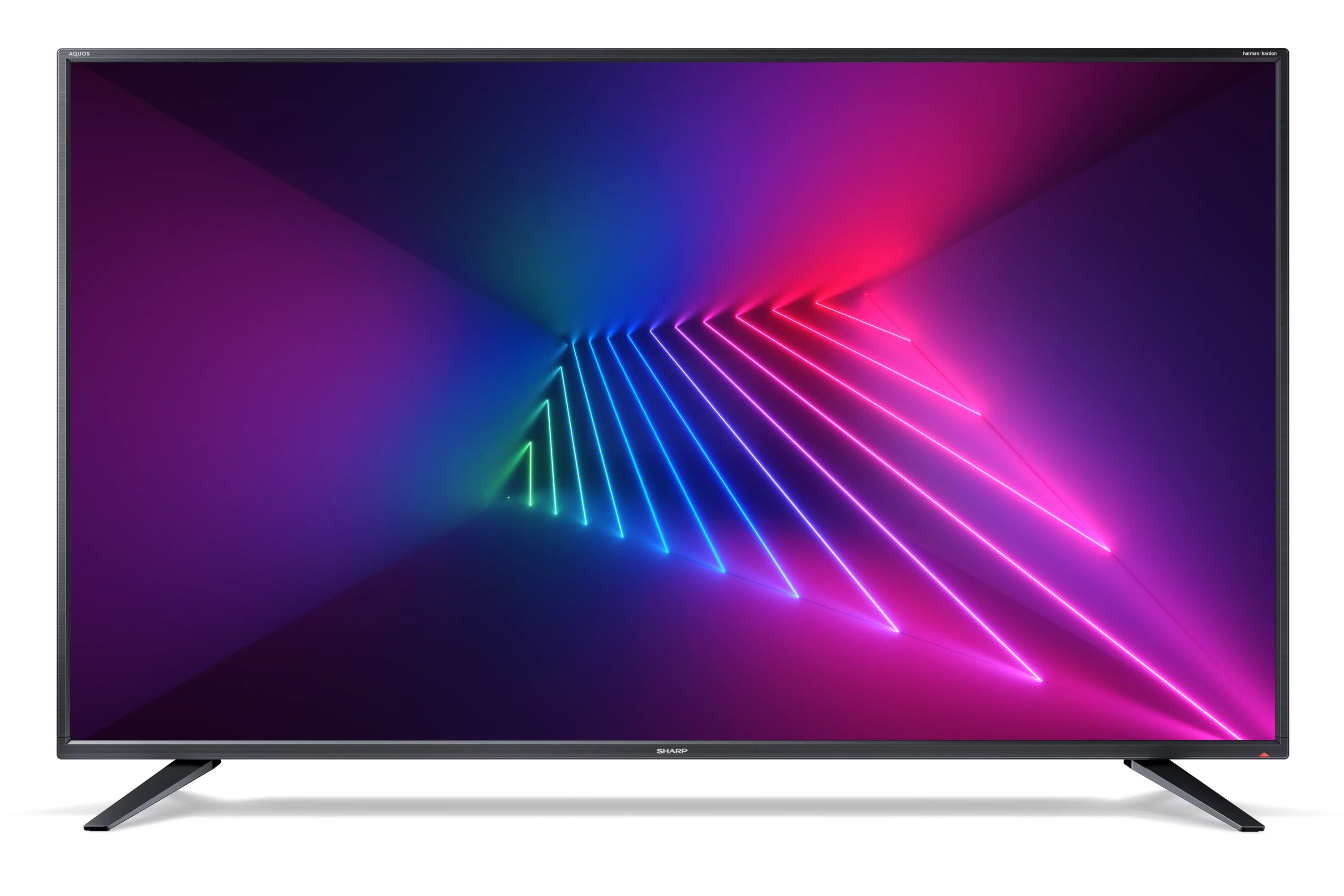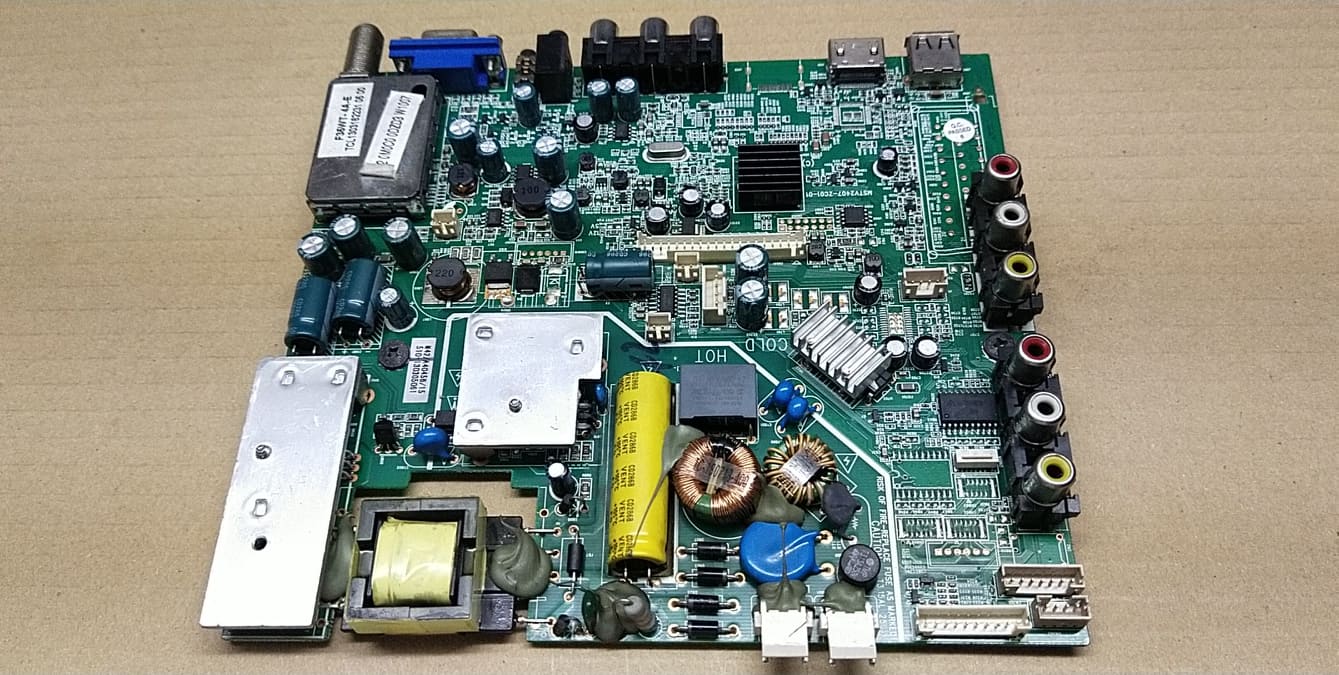Introduction
Welcome to the fascinating world of LED TV backlighting! In this article, we will dive deep into the intricacies of LED TV backlight technology and explore the benefits and drawbacks it offers to television enthusiasts. Whether you’re in the market for a new TV or simply curious about the latest advancements in display technology, understanding LED TV backlighting will give you valuable insights into the visual experience you can expect from your television.
LED TV backlighting plays a crucial role in determining the picture quality and overall viewing experience. It is the technology responsible for illuminating the screen, enhancing contrast, and producing vibrant colors. LED stands for Light Emitting Diode, a form of lighting that has revolutionized the electronics industry with its energy-efficiency and versatility.
LED backlighting technology has come a long way since its inception. It has replaced traditional fluorescent lamp backlighting due to its numerous advantages, including better color accuracy, improved energy efficiency, and greater control over brightness levels. These features have made LED TV backlighting the preferred choice for manufacturers, resulting in the widespread adoption of LED TVs in the market.
In this article, we will explore the different types of LED TV backlighting, such as direct LED backlighting, edge LED backlighting, and full-array LED backlighting. We will discuss the pros and cons of each type, as well as provide tips on how to choose the right backlighting technology for your specific needs. By the end of this article, you will have a comprehensive understanding of LED TV backlighting and be well-equipped to make informed decisions when purchasing a new television.
So, let’s embark on this illuminating journey to unravel the mysteries of LED TV backlighting and discover how it enhances the visual experience of our favorite shows, movies, and games.
The Basics of LED TV Backlight
Before delving into the intricacies of LED TV backlighting, it’s important to grasp the fundamental principles behind this technology. LED TV backlighting refers to the method used to illuminate the display panel of an LED TV, creating the images that we see on the screen.
The primary purpose of LED TV backlighting is to provide uniform illumination across the entire screen. This is achieved by placing a series of tiny LED lights behind the display panel. These LEDs emit light when an electric current passes through them, resulting in the illumination of the screen.
LEDs offer several advantages over traditional fluorescent lamps, which were used in older LCD TVs. One notable advantage is that LEDs are smaller in size, allowing for more precise placement behind the screen. This precision enhances the control of brightness and contrast, leading to better picture quality.
LED TV backlighting also improves energy efficiency. Unlike fluorescent lamps, which require a continuous flow of electricity, LEDs can be turned on and off individually or in groups. This feature enables localized dimming, where areas of the screen that should be dark can have their LEDs turned off, conserving energy and enhancing contrast.
LED TV backlighting is typically categorized into three main types: direct LED backlighting, edge LED backlighting, and full-array LED backlighting. Each type has its own advantages and disadvantages, and the choice between them depends on personal preferences and specific viewing requirements.
In the next sections, we will delve deeper into the different types of LED TV backlighting and explore how they contribute to the overall viewing experience. By understanding these basics, you will have a solid foundation for selecting the right LED TV with the most suitable backlighting technology for your needs and preferences.
How LED TV Backlight Works
Understanding how LED TV backlighting works is essential to appreciating its impact on the visual quality of the screen. The process begins with the placement of a series of light-emitting diodes (LEDs) behind the display panel of the TV.
When an electric current is passed through the LEDs, they emit light in various colors, including red, green, and blue. By controlling the intensity and combination of these colors, the TV can reproduce a wide range of hues, resulting in vibrant and lifelike images.
LED TV backlighting offers several advantages over other types of backlighting technologies. One significant advantage is its ability to provide localized dimming. This means that the LEDs behind specific areas of the screen can be dimmed or turned off completely, creating deeper blacks and enhancing contrast. This localized dimming improves picture quality by reducing light bleed and increasing the difference between bright and dark areas of the image.
Another advantage of LED TV backlighting is its energy efficiency. LED lights consume less power compared to other backlighting technologies, such as fluorescent lamps. Furthermore, the ability to dim or switch off specific LEDs results in additional energy savings, making LED TVs more environmentally friendly and cost-effective in the long run.
In addition to providing illumination, LED TV backlighting can also contribute to enhancing the viewing experience through features like dynamic backlight control. This technology adjusts the brightness and contrast levels based on the content being displayed. For example, during dark scenes in a movie, the backlight can be lowered to create a more immersive experience, while in brighter scenes, it can be increased to enhance detail and clarity.
The advancements in LED TV backlighting technology have also led to innovations such as local dimming zones. These zones divide the screen into smaller sections, with each section having its own control over brightness and dimming. This results in even greater contrast and precise control over the display, especially in high-end LED TVs.
Overall, LED TV backlighting technology plays a crucial role in determining the visual quality and viewing experience. Its ability to provide uniform illumination, energy efficiency, and advanced features like localized dimming make LED TVs a popular choice among consumers seeking the best possible picture quality.
Different Types of LED TV Backlighting
LED TV backlighting is not a one-size-fits-all technology. There are different types of LED TV backlighting methods, each with its own characteristics and advantages. Understanding these different types will help you make an informed decision when choosing a TV that suits your preferences and viewing needs.
1. Direct LED Backlighting:
Direct LED backlighting, also known as full LED backlighting, involves placing the LEDs directly behind the entire surface of the display panel. This type of backlighting offers excellent control over brightness levels and enhances contrast, resulting in deep blacks and vivid colors. With direct LED backlighting, dimming zones can be individually controlled, allowing for precise adjustment of brightness in different areas of the screen. Direct LED backlighting is commonly found in high-end LED TVs, delivering superior picture quality and a more immersive viewing experience.
2. Edge LED Backlighting:
Edge LED backlighting is the most common type of LED backlighting used in modern LED TVs. In this method, the LEDs are placed along the edges of the display panel. The light is then spread across the entire screen using a light diffusion panel. Edge LED backlighting offers a slim profile and energy efficiency, making it popular for thin and lightweight TVs. However, it may not provide the same level of uniformity, contrast, and localized dimming capabilities as direct LED backlighting.
3. Full-Array LED Backlighting:
Full-array LED backlighting is a hybrid approach that combines elements of both direct and edge LED backlighting. Instead of being placed uniformly behind the entire panel, the LEDs are arranged in an array of zones, usually located behind the screen. This allows for more precise control over localized dimming, enhancing contrast and black levels. Full-array LED backlighting strikes a balance between picture quality and affordability, making it a popular choice for mid-range LED TVs.
While these are the main types of LED TV backlighting, it’s worth noting that manufacturers may use their own marketing terms and variations of these technologies. Some models may incorporate additional gimmicks, such as quantum dot technology or advanced algorithms, to further enhance the visual performance.
Ultimately, the choice of LED TV backlighting type depends on your preferences, budget, and the level of picture quality you desire. It is recommended to consider factors like contrast ratio, black levels, and viewing conditions to determine which type of LED TV backlighting suits your specific needs.
Direct LED Backlighting
Direct LED backlighting, also known as full LED backlighting, is a technology used in high-end LED TVs to provide superior picture quality and advanced control over brightness and contrast. In this method, the LEDs are positioned directly behind the entire surface of the display panel.
The key advantage of direct LED backlighting is its ability to offer excellent control over brightness levels and localized dimming. By dividing the screen into multiple dimming zones, each zone can be individually controlled to adjust brightness and enhance contrast. This results in deeper blacks, enhanced details, and a more immersive viewing experience.
Direct LED backlighting also provides uniform illumination across the entire screen. Since the LEDs are positioned directly behind the panel, there is minimal light bleed and better light distribution, resulting in consistent brightness levels and color accuracy. This technology is particularly beneficial for displaying content with dark scenes, as it enhances the visibility of details and creates a more realistic image.
Another advantage of direct LED backlighting is its ability to deliver vibrant and accurate colors. With precise control over the LEDs, the TV can reproduce a wide color gamut, resulting in more lifelike and vibrant images. This is especially important for content that requires accurate color representation, such as movies, gaming, and professional photography.
However, direct LED backlighting does have a few limitations. One is the thickness of the TV. Because the LEDs are positioned behind the entire panel, direct LED backlighting requires more space, making the TV bulkier compared to edge-lit LED TVs. Additionally, direct LED backlighting tends to be more expensive due to the use of a larger number of LEDs and the required technology for individual LED control.
Despite these limitations, direct LED backlighting remains the top choice for those seeking the highest level of picture quality and performance. It is the technology of choice for top-tier LED TVs that prioritize accurate colors, deep blacks, and immersive viewing experiences. If you’re a cinephile, gamer, or professional seeking the best possible display quality, direct LED backlighting is worth considering.
Edge LED Backlighting
Edge LED backlighting is one of the most common types of LED TV backlighting used in modern televisions. With this technology, the LEDs are positioned along the edges of the display panel instead of behind it.
The main advantage of edge LED backlighting is its slim profile and lightweight design. By placing the LEDs along the edges, TV manufacturers are able to create televisions with a sleek and thin form factor. This makes edge LED TVs aesthetically pleasing and ideal for wall-mounting, as they take up minimal space and blend seamlessly with the surroundings.
Edge LED backlighting also offers energy efficiency. Since the LEDs are placed on the edges, they require less power compared to full-array LED backlighting or direct LED backlighting, resulting in lower energy consumption and reduced electricity bills.
One drawback of edge LED backlighting is its potential for less uniform illumination. Since the light emitted from the LEDs needs to be spread across the entire screen, a light diffusion panel is used to distribute the light. This diffusion process may sometimes result in uneven brightness, causing areas of the screen to appear slightly darker or brighter. However, advancements in technology have minimized this issue, and most modern edge LED TVs provide reasonably consistent illumination.
Another consideration with edge LED backlighting is the limited control over localized dimming. As the LEDs are positioned on the edges and not individually behind the screen, the ability to control specific zones to enhance contrast and black levels is more limited compared to direct LED backlighting.
Despite these limitations, edge LED backlighting is still widely used due to its affordability and widespread availability. It provides a good balance between picture quality and cost, making it a popular choice for consumers looking for a budget-friendly LED TV with sleek design and energy efficiency.
When selecting an edge LED TV, it’s important to consider factors like overall picture quality, color accuracy, and viewing conditions. Look for models with advanced features, such as local dimming algorithms or dynamic contrast enhancements, to optimize the viewing experience. By understanding the benefits and limitations of edge LED backlighting, you can make an informed decision and choose the TV that best suits your preferences and budget.
Full-Array LED Backlighting
Full-array LED backlighting is a hybrid approach that combines elements of direct and edge LED backlighting. With this technology, the LEDs are arranged in an array directly behind the display panel, but instead of covering the entire surface, they are divided into zones or clusters.
The key advantage of full-array LED backlighting is its ability to provide localized dimming. By dividing the LEDs into zones, each zone can be individually controlled to adjust the brightness and enhance contrast. This precise control over localized dimming allows for deeper blacks, improved shadow detail, and enhanced picture quality. Full-array LED backlighting can provide a more uniform backlight distribution compared to edge LED backlighting, resulting in more consistent brightness levels across the screen.
Furthermore, full-array LED backlighting offers better control over light bleeding and blooming. Since the LEDs are positioned directly behind the panel, they can be turned off or dimmed in specific zones to prevent light from seeping into adjacent areas. This helps to minimize unwanted light artifacts and improve contrast ratios, resulting in enhanced image quality and more accurate color reproduction.
While full-array LED backlighting offers superior picture quality, it does come with some trade-offs. One limitation is the thickness of the TV. Since the LED array requires a certain amount of space, full-array LED TVs tend to be thicker than edge-lit LED TVs. This may not be ideal for individuals looking for a slim and sleek design.
Additionally, full-array LED backlighting is often found in higher-end models, which means it can be more expensive compared to edge-lit LED TVs. The use of more LEDs and advanced dimming technology contributes to the higher cost. However, prices have become more affordable in recent years as this technology has become more widespread.
Full-array LED backlighting is a solid choice for those seeking a balance between picture quality and affordability. It offers better control over contrast, black levels, and light distribution compared to edge LED backlighting. If you prioritize enhanced picture quality and are willing to invest in a higher-end LED TV, full-array LED backlighting is worth considering.
Pros and Cons of LED TV Backlighting
LED TV backlighting has revolutionized the television industry, offering numerous benefits and advancements over traditional backlighting technologies. However, like any technology, LED TV backlighting also has its share of advantages and disadvantages. Let’s explore the pros and cons.
Pros of LED TV Backlighting:
1. Energy Efficiency: LED TV backlighting is highly energy-efficient. LEDs consume less power compared to other backlighting technologies, resulting in reduced electricity consumption and lower energy bills.
2. Better Picture Quality: LED TV backlighting enables enhanced picture quality with vibrant colors, deeper blacks, and improved contrast ratios. The advanced control over brightness and localized dimming allows for a more immersive viewing experience.
3. Long Lifespan: LED lights have a longer lifespan compared to traditional backlighting technologies. This means LED TVs require fewer replacements or repairs, resulting in cost savings over time.
4. Thinner and Lighter Designs: LED TV backlighting allows for thinner and lighter TV designs, making them aesthetically pleasing and easy to mount on walls.
5. Fast Response Time: LED TV backlighting offers faster response times, reducing motion blur and providing smoother, more fluid visuals, which is especially important for gaming and action-packed content.
Cons of LED TV Backlighting:
1. Potential Light Bleeding: In some cases, LED TV backlighting may exhibit light bleeding or blooming, where light from one part of the screen spills into adjacent areas. This can slightly reduce the overall contrast and impact the viewing experience.
2. Higher Initial Cost: LED TVs with advanced backlighting technologies can be more expensive compared to other types of TVs. However, prices have become more affordable in recent years due to increased adoption and competition among manufacturers.
3. Limited Viewing Angle: LED TV backlighting may have a narrower viewing angle compared to other display technologies, such as OLED. This means that colors and brightness may appear less accurate if viewed from extreme angles.
4. Uniformity Issues: While advancements in LED TV backlighting have significantly improved uniformity, some models may still exhibit minor inconsistencies in brightness across the screen, resulting in slight variations in picture quality.
Overall, LED TV backlighting offers a multitude of benefits, including energy efficiency, better picture quality, and sleek designs. While there are a few potential drawbacks, the advancements in this technology have significantly minimized these issues, making LED TVs the preferred choice for most consumers today.
Benefits of LED TV Backlighting
LED TV backlighting brings several notable benefits to the table, making it a popular choice for consumers looking for high-quality televisions. Let’s explore some of the key advantages of LED TV backlighting:
1. Enhanced Picture Quality: LED TV backlighting technology offers superior picture quality compared to traditional backlighting methods. With precise control over brightness and localized dimming, LED TVs can produce deeper blacks, vibrant colors, and improved contrast ratios. This results in a more immersive and realistic viewing experience, making movies, TV shows, and games come to life.
2. Energy Efficiency: LED TV backlighting is highly energy-efficient. LED lights consume less power compared to other backlighting technologies, such as fluorescent lamps. This energy efficiency translates into lower electricity bills and reduced environmental impact. LED TVs are an eco-friendly choice, allowing you to enjoy your favorite content guilt-free.
3. Long Lifespan: LED lights have a considerably longer lifespan compared to traditional lighting technologies. This means that LED TV backlighting requires fewer replacements and repairs, saving you money in the long run. You can enjoy your LED TV for years without worrying about the backlight burning out or deteriorating.
4. Slim and Sleek Designs: LED TV backlighting allows for thinner and lighter television designs. Compared to older models, LED TVs are slimmer and more aesthetically pleasing. The slim profile and minimal bezels of LED TVs make them ideal for both wall-mounting and placement on TV stands, adding a touch of modern elegance to any living space.
5. Wide Range of Sizes and Options: LED TV backlighting technology is widely adopted across different screen sizes, ranging from compact models to large, immersive displays. Whether you’re looking for a small TV for a bedroom, a mid-sized TV for the living room, or a large screen for a home theater setup, LED TVs offer a wide range of options to suit your needs and preferences.
6. Compatibility with Advanced Features: LED TV backlighting is compatible with various advanced features and technologies, such as high dynamic range (HDR) and high frame rate (HFR) content. This compatibility ensures that you can fully utilize the potential of modern content formats and enjoy a visually stunning experience right in the comfort of your home.
7. Gaming Performance: LED TVs with fast response times and high refresh rates are well-suited for gaming. With the ability to handle fast-paced action scenes and reduce motion blur, LED TVs provide an immersive gaming experience. Many LED TVs also come equipped with gaming-specific features such as low input lag and variable refresh rate (VRR), further enhancing the gaming performance.
Overall, LED TV backlighting offers a host of benefits, including enhanced picture quality, energy efficiency, space-saving designs, and compatibility with advanced features. These advantages make LED TVs the go-to choice for those seeking exceptional visual performance and a superior entertainment experience.
Drawbacks of LED TV Backlighting
While LED TV backlighting technology offers numerous benefits, it is important to consider some of the potential drawbacks associated with this technology. Understanding these limitations will help you make an informed decision when purchasing an LED TV. Let’s explore some of the key drawbacks:
1. Limited Viewing Angles: LED TVs may exhibit limitations in terms of viewing angles. When viewed from extreme angles, colors and brightness levels may appear less accurate. This means that the optimal viewing experience is achieved when you are positioned directly in front of the screen. However, advancements have been made to minimize this issue, and most modern LED TVs offer reasonable viewing angles.
2. Potential Light Bleeding: Light bleeding can occur in LED TVs, especially in models with edge LED backlighting. Light bleeding happens when light from one part of the screen spills into adjacent areas, resulting in a reduction in contrast and affecting the overall picture quality. However, manufacturers have made significant improvements in reducing light bleeding, and it is less of an issue in newer LED TV models.
3. Uniformity Issues: Some LED TVs may have slight inconsistencies in brightness levels across the screen. This can result in slightly uneven backlight distribution, causing certain areas to appear slightly darker or brighter than others. While modern LED TVs have improved uniformity, it is still worth considering when making your purchasing decision.
4. Potential Motion Blur: While LED TVs generally have fast response times, some models may still experience motion blur, especially during fast-paced action scenes. This can lead to slight blurring or smearing of moving objects on the screen. However, this drawback has been minimized in most modern LED TVs with improved motion processing technology.
5. Cost Considerations: LED TVs with advanced backlighting technologies, such as direct LED or full-array LED, can be more expensive compared to other types of TVs. The additional cost stems from the use of a larger number of LEDs and the necessary technology to control individual LEDs or dimming zones. However, with growing adoption and market competition, LED TVs have become more affordable over time.
6. Thickness and Weight: Full-array LED TVs, in particular, tend to be thicker and heavier compared to edge-lit LED TVs. This may not be ideal for individuals seeking a slim and sleek TV design, especially if you plan to mount the TV on a wall. However, advancements in technology have resulted in thinner full-array LED TVs compared to older models.
It is important to note that the drawbacks mentioned above may vary across different LED TV models and manufacturers. It is recommended to research and read reviews to better understand the specific drawbacks associated with the LED TVs you are considering purchasing.
Despite these drawbacks, LED TV backlighting technology continues to improve, offering exceptional picture quality, energy efficiency, and a range of advanced features. By weighing the pros and cons, you can make an informed decision and choose the LED TV that best suits your needs and preferences.
Tips for Choosing the Right LED TV Backlighting
When selecting an LED TV, choosing the right backlighting technology is an important consideration. Here are some tips to help you make the best choice:
1. Consider Your Viewing Environment: Take into account the lighting conditions in the room where the TV will be placed. If you have a well-lit room or large windows, consider direct LED backlighting or full-array LED backlighting. These technologies offer better control over brightness levels and can provide a more immersive viewing experience in brighter environments.
2. Assess Your Usage and Content: Determine how you primarily use your TV. If you enjoy watching movies and playing games with darker scenes, technologies like direct LED or full-array LED backlighting with localized dimming capabilities can greatly enhance the contrast and black levels. If you primarily watch daytime TV, news, or sports in a bright environment, edge LED backlighting may be sufficient for your needs.
3. Consider your Budget: LED TVs with direct LED or full-array LED backlighting tend to be more expensive compared to edge-lit LED TVs. Set a realistic budget and weigh the benefits of advanced backlighting technologies against the additional cost to determine the right balance for your needs.
4. Read Reviews and Compare Models: Before purchasing an LED TV, read reviews and compare different models. Look for user feedback on picture quality, backlighting performance, and any potential drawbacks. This will help you understand the specific characteristics and performance of different LED TVs from various manufacturers.
5. Look for Advanced Features: Consider the additional features available in the LED TVs you are considering. Features like local dimming, high dynamic range (HDR) support, and gaming-specific features can significantly enhance the visual experience. Choose the TV that offers the features that are important to you and align with your usage requirements.
6. Visit a Showroom if Possible: If possible, visit a store or showroom to see the LED TVs in person. This will give you an opportunity to observe the picture quality, assess the uniformity, and evaluate the performance of different backlighting technologies firsthand.
7. Consider the Brand and Warranty: Research the reputation and customer service of the brand you are considering. Look for warranties that provide adequate coverage and support in case of any issues with the LED TV.
By considering these tips, you can make an educated decision and choose the LED TV with the most suitable backlighting technology for your needs, budget, and viewing environment. Remember to prioritize the factors that are most important to you in order to maximize your enjoyment of your new LED TV.
Conclusion
LED TV backlighting technology has transformed the television industry, offering significant advancements in picture quality, energy efficiency, and design. By understanding the basics and the different types of LED TV backlighting, you can make an informed decision when choosing the right television for your needs.
The benefits of LED TV backlighting are numerous. From enhanced picture quality and vibrant colors to energy efficiency and sleek designs, LED TVs offer a superior visual experience. The ability to control brightness levels and utilize localized dimming results in deeper blacks, improved contrast, and an immersive viewing experience. LED TVs are also compatible with advanced features such as high dynamic range (HDR), providing stunning visuals and improved color accuracy.
While there are some drawbacks to consider, such as potential light bleeding and limited viewing angles, these issues have been minimized in modern LED TV models. Uniformity, motion blur, and cost considerations can also be factors, but advancements and competition among manufacturers continue to address these challenges.
When selecting an LED TV, it is crucial to consider factors such as your viewing environment, usage patterns, and budget. Reading reviews, comparing models, and considering additional features like local dimming, HDR, and gaming-specific enhancements will help guide your decision. If possible, visit a showroom to see the LED TVs in person and assess their performance before making a choice.
In conclusion, LED TV backlighting technology has pushed the boundaries of television displays, revolutionizing the way we enjoy our favorite content. Whether you opt for direct LED backlighting, edge LED backlighting, or full-array LED backlighting, you can expect a visually stunning experience with vibrant colors, deep blacks, and precise control over brightness and contrast. With advancements in technology and falling prices, LED TVs have become more accessible, providing an excellent option for those seeking a superior visual experience in their home entertainment setup.







